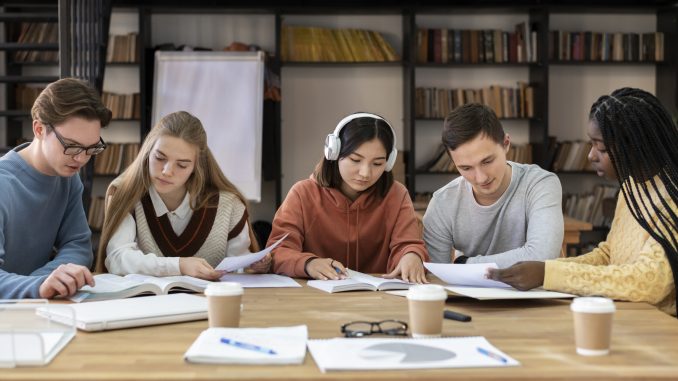
Blended learning is a form of learning that combines face-to-face instruction with online learning to offer students more flexible and personalized experiences Designed with a digital focus, the modern-day learning method uses platforms and multimedia resources in ways that are not possible in traditional settings. Closely collaborated methods which engage students and educators worldwide It provides students with 24/7 access to coursework from anywhere in the world, while also facilitating self-paced study and instant feedback on test scores As a result, students can develop their thought processes, memorize information and learn vocabularies. Interaction with native speakers enables them to practice their listening and speaking abilities in real life activities too On its own, project-based learning transforms learning into an active, hands-on experience that engages students directly in investigations of real-world questions or problems Building practical skills and engaging students in active format The learning model of experiential learning focuses heavily on doing, reflection, and applying what’s been learned in reality-based situations in order to ensure that skills are acquired It could mean experiential practices like internships, field trips, role playing, service learning projects, and simulations, which serve to connect theory with practical experience The technique of experiential learning gives students plenty of room for active practice, reflection in action, acquiring skills and a real basis of practical knowledge as in no other method. All these make students more employable in the complex real worlds.
Gamification and Game-Based Learning: Engaging Learners Through Play
Gamification and game-based learning use game elements, mechanics, narratives, and challenges to engage learners. By gamifying educational content, assessments, and activities, educators transform passivity into activity. Gamification can allow students to be transformed in the process from being mere receivers of information into active participants who engage with what they learn. Through gamification, teachers make it easier for some students to concentrate and stick with content standard tests. Precisely because of its competitiveness and fast-paced rhythm, gamified environments can have a tremendous effect on learning outcomes, attitude toward work ethic and therefore performance.
Personalized Learning: Tailoring Learning Experiences to Individual Needs
Personalized learning makes use of data analytics, different instruction models and adaptive technology to tailor learning experiences based on an individual student’s preferences or abilities. Providing personalized learning paths, content recommendations, learning activities and assessments, feedback, teachers are creating tailored learning experiences that improve student engagement pace of study mastery and retention of knowledge. Personalized learning encourages self-directed study and autonomy, and students are not doing it for the rewards, but to experience the result of their work – a good day at school.
Flipped Classroom: Flipping Traditional Instruction Models
The instructional content is delivered outside of the classroom in a flipped classroom. Class time becomes an opportunity to engage in activities, discussions, and collaborative work on puzzles. This way of learning is conducive to active participation, interaction among students, and mutual correction between students. It can help students think about problems by talking with peers while teachers rely more on the Socratic method (asking question after question until a response is found). Students can go back over materials at their leisure, look for understanding and apply lessons in meaningful ways during instruction sessions.
Technology-Enhanced Learning: Harnessing the Power of Technology
Technology-enhanced learning refers to a vast array of digital tools, platforms, and resources that can help to improve teaching experiences and classroom environments. From learning management systems (LMS), educational apps, virtual reality (VR) or artificial intelligence (AR) to simulations, digital storytelling, and online collaboration tools, technology provides innovative ways to present content, promote interactive learning experiences and assess progress or give feedback. Post-secondary institutions have found technology particularly well-suited for offering aca-demically rigorous work.
Challenges and Considerations for Innovation in Education
While promising benefits of innovative education abound, they also bring about particular difficulties worth considering. These might include digital inequality problems, access to technology and resources opportunities for teacher training and professional development, curriculum design and alignment, assessment strategies, data privacy and security, student engagement and motivation, managing screen time, and addressing injustices due to individual learning preferences.
Conclusion
Innovative ways of educating are changing the educational landscape, presenting users with all sorts of chances for interaction, cooperative efforts or teamwork, tailoring learning experiences to fit individual needs, and actually learning in depth. Because teachers can pursue new and different forms like experiential education, gamification, personal learning styles (where traditional instruction is no longer necessary because you’re in control of the contents), blended learning and technology-assisted learning or flipped classrooms; educators will be able to create dynamic, inclusive, and forward-thinking learning environments. Such an environment will enable students to adapt with ease as they tackle life’s various changes in an era of rapid evolution. However, as education shifts and transforms, novel ways of learning start to take shape-resulting in endless opportunities for innovative practice to come alive in every corner of the literate world. With that in mind, a more engaging, effective and fair education system also becomes possible.